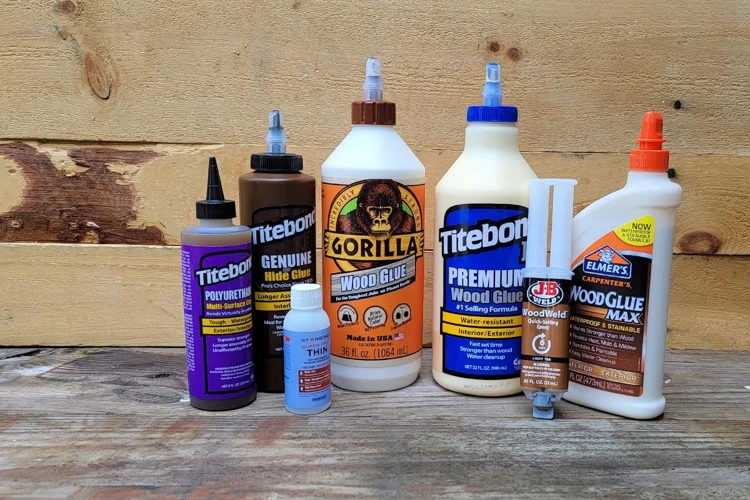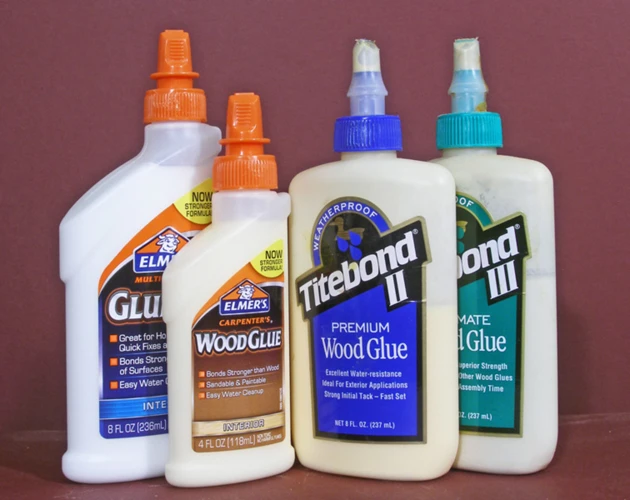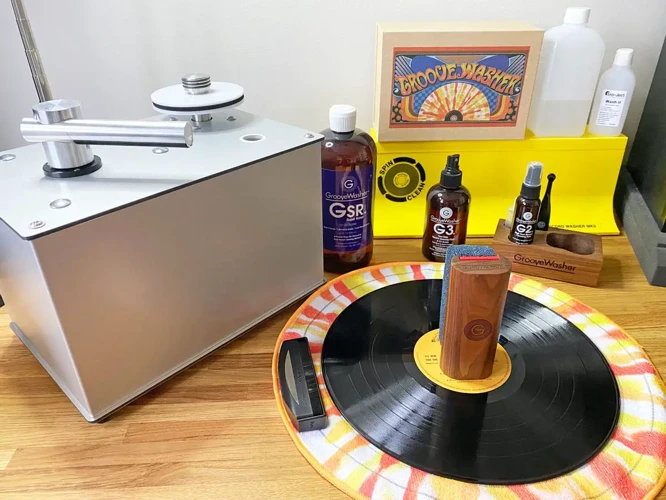The Importance of Clean Records
Vinyl enthusiasts know that the purity of sound is paramount. Dirt, dust, and grime can all interfere with the listening experience, causing unwanted noise and potentially damaging the delicate grooves of records. Maintaining vinyl records is not just about preserving their aesthetic appeal; it’s crucial for ensuring the longevity and sound quality of your cherished collection.
Why Use Wood Glue for Vinyl Cleaning
Among the myriad of cleaning techniques, the wood glue cleaning method stands out for its effectiveness and simplicity. This unconventional approach uses the adhesive properties of wood glue to lift even the most stubborn of impurities from the grooves, leaving behind a pristine surface that’s ready to produce crystal-clear audio.
Vinyl Record Cleaning with Wood Glue
Benefits of the Wood Glue Cleaning Method
The wood glue method is not just a novelty; it’s a powerhouse when it comes to removing deeply embedded debris. It reaches into the grooves where traditional cleaning methods may falter, ensuring a thorough cleanse without the need for harsh chemicals or extensive scrubbing that could harm the record.
Safe Record Cleaning: Choosing the Right Wood Glue
For a successful vinyl record cleaning session, selecting a safe and appropriate wood glue is critical. You’ll want a product that is free of harmful solvents and is designed to dry clear. This ensures that the adhesive can be removed easily and without leaving any residue that could affect playback quality.
DIY Record Cleaning: Step-by-Step Guide
Preparing Your Workspace and Materials
Start by setting up a clean, flat surface and gather your materials: a record platter for stability, a bottle of suitable wood glue, a plastic applicator, and something to play music while you work — just for fun. Ensure your hands are clean to avoid transferring oils to the vinyl.
Applying Wood Glue to Your Vinyl Records
Gently place the record on the platter and begin to apply the glue in a spiral pattern, starting from the center. Use the applicator to spread the glue evenly across the surface, taking care not to get any on the label. Aim for a thin, uniform layer that covers the entire playable area of the record.
The Wood Glue Peeling Technique
After allowing the glue to dry completely — which can take up to 24 hours — the magic happens. Starting from the edge, carefully peel the dried glue from the record. As it lifts, it will take with it the dirt that was deep in the grooves. The result is a vinyl that’s not just visually cleaner, but audibly superior as well.
Removing Dust from Vinyl: Tips and Tricks
Enhancing the Wood Glue Method
- Apply the glue in a well-ventilated area to avoid inhaling fumes.
- Use a silicone spatula for a more controlled and even spread of the glue.
- Consider using a clamp to keep the record still if your platter doesn’t have a stabilizing feature.
Additional Tools for Effective Cleaning
While the wood glue method is effective on its own, complementing it with a few additional tools can enhance the experience. A carbon fiber brush to remove surface dust before applying the glue, and a stylus cleaner for the needle post-cleaning, are excellent additions to your vinyl care arsenal.
Maintaining Vinyl Records Post-Cleaning
Storage and Handling Best Practices
After you clean records with glue, proper storage and handling are essential to keep them in top shape. Store your vinyl vertically in a cool, dry place and handle them by the edges or label to minimize contact with the grooves. Protective sleeves can also prevent future contamination.
Regular Cleaning Routines
Implementing a regular cleaning routine will ensure that your records remain in pristine condition. A quick brush before and after playing will drastically reduce the buildup of dust and decrease the frequency of deep cleans needed with wood glue or other intensive methods.
Restore Old Records with Wood Glue
Reviving Your Vintage Collection
For collectors of vintage vinyl, the wood glue method can breathe new life into old records. It’s particularly adept at tackling the kind of grime that builds up over decades, restoring not just the look but the authentic sound of classic albums.
Precautions When Cleaning Older Vinyl
When attempting to restore old records, proceed with caution. Test the wood glue on a small section if possible, and ensure that the record is free of any structural damage that could be exacerbated by the peeling process. Remember, the goal is to revive your collection, not risk its integrity.
Before and After: The Results of Wood Glue Cleaning
Visual Improvements
The transformation can be astonishing. Where once there was a dull, dusty surface, there’s now a gleaming vinyl that looks as good as it did when it first spun on a turntable. The removal of the glue reveals a record that could be mistaken for brand new.
Audio Quality Enhancements
The audible benefits are just as impressive. Listeners will notice a significant reduction in surface noise, leading to a purer sound where each note and nuance is heard as intended. It’s a method that not only cleans but also enhances the overall sensory experience.
The Bottom Line: Is Wood Glue the Best Option for You?
Pros and Cons of the Wood Glue Method
The wood glue method is highly effective, but it’s not without its drawbacks. It requires patience and a steady hand, and it’s not the quickest method available. However, for those willing to invest the time, it can yield impressive results that other methods struggle to match.
When it comes to preserving your vinyl collection, cleanliness is key. But have you ever considered using wood glue for cleaning records? It’s an unconventional method that has gained popularity among audiophiles. For general tips on working with this adhesive, check out our guide on how to clean wood glue. If you’ve already used wood glue and need advice on tidying up afterward, our article on how to clean up wood glue can help. And if you’re just starting and need to know the basics of handling your bottle of adhesive, our instructions on how to open wood glue will ensure you’re prepared. With the right know-how, wood glue can not only bond materials but also help in keeping your records in pristine condition.
Comparing Wood Glue to Other Cleaning Methods
When considering wood glue for vinyl, it’s worth weighing it against other cleaning options. Automated machines offer convenience but at a higher cost, while manual brushing is quicker but may not be as thorough. Each method has its place, but for deep cleans, wood glue remains a top contender.
In summary, the wood glue cleaning method provides a unique and effective solution for vinyl record cleaning. It’s a DIY approach that, while time-consuming, offers a depth of clean that few other methods can replicate. For the audiophile seeking to maintain and restore their collection, wood glue represents a method worth considering.


